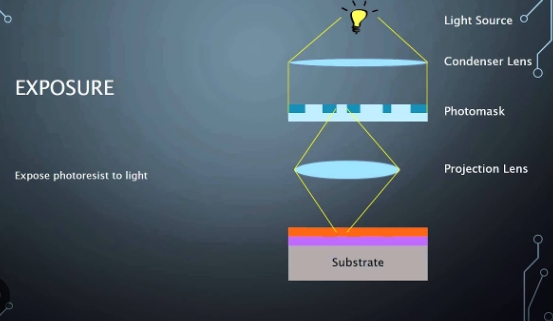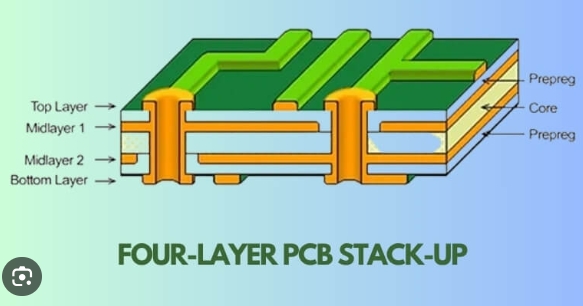




2025-03-13
On June 6, 2023, Apple Inc. launched the Apple Vision Pro, which is the latest device based on silicon-based MicroOLED microdisplays. After its official release at "WWDC2023", this product has attracted worldwide attention.
Driven by this product, silicon-based MicroOLED microdisplays have stepped out from behind the scenes and become the focus of the global technology community.
Looking ahead, let's explore the 7 future development trends of silicon-based MicroOLED microdisplays together.
The direction of technological progress depends on the evolution of consumer demands. The same is true in the field of silicon-based MicroOLED microdisplays.
The latest technologies for improving the resolution of silicon-based Micro-OLED microdisplays:
Breakthrough in lithography technology: The University of Münster in Germany and Soochow University in China have jointly developed an advanced lithography technology. It adopts the strategy of "patterning the surface first, and then growing the pattern", achieving a Micro-OLED resolution exceeding 20K PPI.

Improvement of semiconductor manufacturing process: A smaller-sized semiconductor wafer manufacturing process directly etches the driving circuit onto the single-crystal silicon substrate, reducing the pixel pitch and increasing the integration degree.
New pixel design: Develop a more refined pixel structure.
Application of high-mobility materials: Research on organic materials with higher carrier mobility.
Due to technological limitations, traditional LEDs always produce image distortion. In the future, silicon-based MicroOLEDs will pursue more accurate and richer color performance.
Multi-stack structure: For example, the fourth-generation OLED technology uses a 4-stack structure, evaporating the anode - red - blue - green - blue - cathode on the glass substrate. Compared with the 3-stack structure, the color purity is significantly improved.

Research and development of new light-emitting materials: Develop new organic light-emitting materials to make the light emission of the three primary colors of red, green, and blue more pure.
Precise current control: Adopt an advanced current-source type PWM (Pulse Width Modulation) pixel driving circuit, which can generate precise current PWM signals to accurately adjust the pixels.
Compensation technology: Some driving circuits have the OLED decay compensation feature to compensate for the color decay of OLEDs during the light-emitting process.
High-color gamut materials: Use materials with a wider color gamut to expand the color range of the display as much as possible.
Color management algorithm: Optimize the color management algorithm to precisely adjust the color of the input image signal.
For portable devices such as AR/VR headsets and smart glasses, not only do they need to be lighter in weight, but they also require longer battery life to be used for extended periods. During some important task stages, once these devices run out of power, it will have a great negative impact.
Although the continuous development of lithium batteries has been continuously increasing the battery life of portable devices, it still seems not enough.
Scientists are also improving the battery life through other means, such as reducing the power consumption of electronic devices to further extend the battery life. This is also part of responding to the global sustainable development strategy.
In the field of silicon-based Micro - OLED displays, the latest technologies dedicated to reducing power consumption:
Optimization technology of CMOS driving circuit: Carefully design the signal transmission path, use low-impedance materials, and optimize the circuit layout to reduce the circuit impedance.
Research and development of high-efficiency OLED organic materials: Phosphorescent organic materials use singlet and triplet excitons for light emission, greatly improving the light-emitting efficiency. In addition, scientists optimize and adjust the electron cloud distribution and functional group structure of molecules to improve the radiative transition efficiency of excitons.
Micro-lens array technology: Micro-lenses precisely guide more light in one direction, reducing internal light scattering and improving the utilization efficiency of light inside the silicon-based Micro-OLED.

Synergistic optimization of single-crystal silicon substrate technology: Chemical vapor deposition (CVD) technology has improved the quality of the single-crystal silicon substrate and enhanced the internal compatibility of the silicon-based Micro-OLED.
In today's era, with its characteristics of high resolution, high contrast, and low latency, silicon-based Micro-OLED microdisplays will continue to dominate the AR/VR market.
With the rise of the metaverse concept, the advent of AI technology, and the successive introduction of wearable devices, the market demand for AR/VR devices will continue to grow. This also means that silicon-based MicroOLED microdisplays will definitely have a broader market space.
When the design and manufacturing of silicon-based Micro-OLED microdisplays become more profitable, it will attract more capital into this market, driving technological development and further reducing manufacturing costs.
In the field of in-vehicle displays, silicon-based MicroOLED microdisplays can be applied to automotive head-up displays (HUDs) and instrument panels, significantly improving the driving experience and enhancing safety.
In the future, with the development of automotive intelligence and networking, especially the development of new energy vehicles such as Tesla and Xiaomi cars, in-vehicle display devices will become essential for future cars.
As major countries around the world increase their military budgets, the stock prices of European military manufacturing enterprises have risen sharply, which will drive the expansion of the production capacity of silicon-based MicroOLED microdisplays.
For example, the stock price of Rheinmetall in Germany was less than 100 euros before the outbreak of the Russia-Ukraine conflict in 2022, and it had risen to 334 euros in January 2024. On the evening of March 3, 2025, the stock price increased by nearly 20% in a single day. The stock price of Thales in France increased by more than 14% on the evening of March 3, 2025.
In the military and aerospace fields, silicon-based MicroOLED microdisplays are essential components of helmet-mounted displays and shipborne display devices, which will significantly improve the combat capabilities of individual soldiers.
With the increase in market demand, major manufacturers will increase their investment and construction of silicon-based Micro-OLED production lines, improve production capacity, and improve manufacturing processes, which will lead to a decrease in the price of commonly used silicon-based Micro-OLEDs in the future.
However, at the same time, high-end silicon-based MicroOLEDs, due to their high technical investment and high technical barriers, will still occupy a leading position in the high-end market.

Relying on its exclusive FSL technology, MOT provides global manufacturers with solutions featuring high performance, low power consumption and cost-effectiveness. This technology has overcome the biggest challenge in the field of OLED technology — the cost issue. At the same time, with the help of this technology, MOT can achieve higher grayscale and resolution for silicon-based OLEDs on the basis of lower costs, which can reduce the manufacturing costs of downstream manufacturers and increase their operating profits.
Contact:https://www.micro-oledtech.com/contact/
As traditional LED walls have become more and more mature, but most of them are used for commercial purposes such as LED video wall rental and services. As micro OLED production capacity expands and prices gradually decrease, it will gradually become an essential part of daily consumer products. With the continuous development of silicon-based MicroOLED microdisplay technology, the prices of more wearable devices will decrease, attracting consumers to purchase them.
At the same time, the expanding demand for electronic technology products among Generation Z has also led to an increase in investment in related enterprises. There are more and more material suppliers, OLED equipment manufacturers, chip design companies, and display panel manufacturers.
In the future, the industrial collaboration of silicon-based MicroOLED microdisplays will be further strengthened.